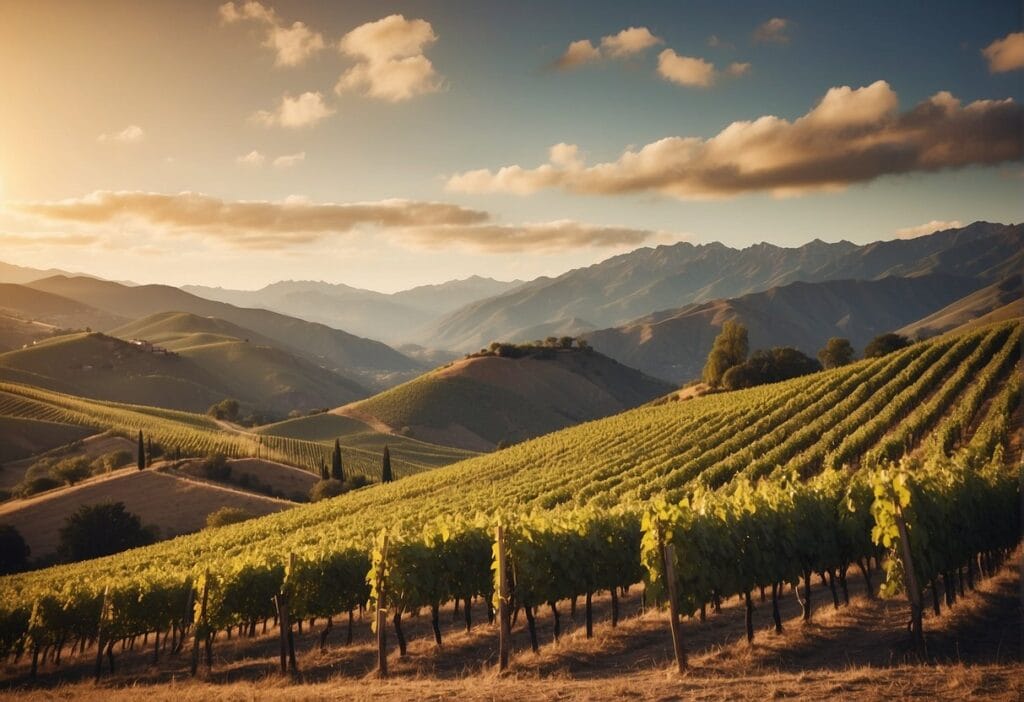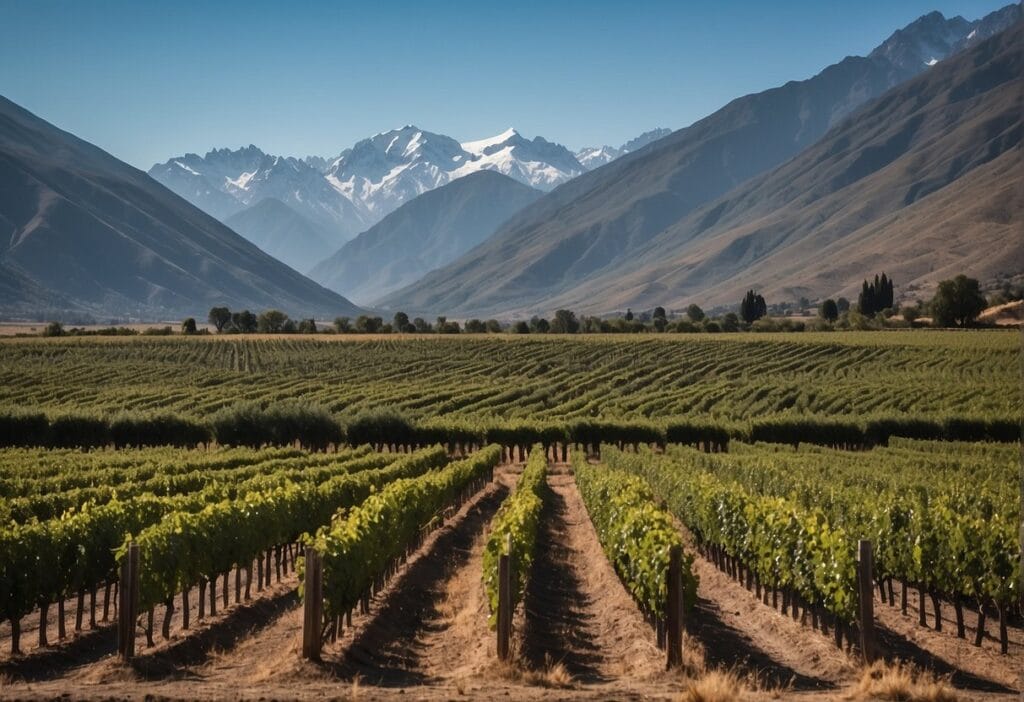Nestled between the sparkling Ligurian Sea and rugged Apennine Mountains, Liguria, a crescent-shaped coastal region in northwest Italy, offers a unique viticultural experience. Known for its steep terraces and scenic beauty, your exploration of the Liguria wine region will take you along a landscape where vineyards cling to slopes, and the maritime influence shapes the character of each bottle.
The wines from Liguria may not be as well-known as those from Tuscany or Piedmont, but they encapsulate the true spirit of Italian wine, brimming with local tradition and a distinct sense of place.
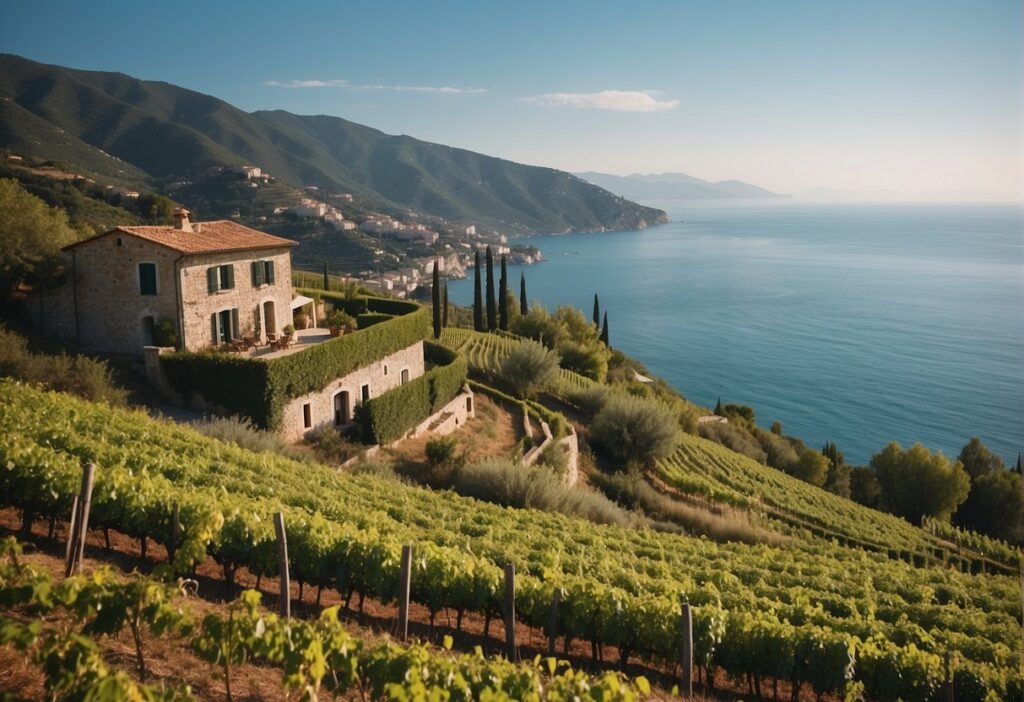
The art of winemaking in Liguria dates back to ancient times, and despite the challenging geography, local winemakers have honed their craft to create exceptional wines that capture the essence of the Mediterranean.
As you delve into Liguria’s wine culture, you’ll discover a variety of grape varieties and wine styles that reflect the region’s diverse microclimates. Whether you’re sipping a crisp white Vermentino with a view of the sea or a delicate red Rossese di Dolceacqua with traditional Ligurian fare, the wines here are as inviting as the region itself.
Key Takeaways
- Liguria offers a distinctive winemaking tradition influenced by its coastal and mountainous terrain.
- Local grape varieties and wines are shaped by the region’s varied microclimates and maritime conditions.
- Ligurian wines are intimately linked with regional culinary traditions, enhancing the local gastronomic experience.
History of Liguria’s Winemaking
The Ligurian wine heritage, rich and storied, taps deep into the ancient world. Your exploration into this region’s viticultural past reveals that the Etruscans laid the groundwork. They brought sophisticated techniques and an adoration for the vine to what is now modern-day Northern Italy.
You then uncover hints of Greek influence from around 600 BC, when maritime trade interconnected Liguria with Greek settlements, particularly Marseille. This cultural exchange provided the impetus for diversifying the grape varieties cultivated and enhancing winemaking methods in the region.
Moving forward, under Rome, viticulture flourished. This period saw wine becoming an integral part of daily life and commerce. Rome’s disciplined approach to agriculture helped stabilize and spread viticulture throughout its territories, including the terraced cliffs of Liguria.
In Liguria, a blend of geography and human ingenuity gave birth to distinctive wines. The region boasts several Denominazione di origine controllata (DOC) areas, like the famed Cinque Terre DOC. The steep, cliff-side vineyards of Cinque Terre present a unique viticultural landscape that, combined with Liguria’s mild climate, leads to the creation of the light white wines you might enjoy today, made from local grapes such as Bosco, Albarola, and Vermentino.
The passage of time didn’t always treat Ligurian wine kindly, especially with the devastation of phylloxera in the 1920s, a plight which nearly obliterated the Cinque Terre vineyards. But the resilience of winemakers and the tenacity of local communities helped revive these historic vines, ensuring that Liguria’s winemaking would endure and continue to be celebrated by those who cherish its legacy.
Geography and Climate
The geography and climate of the Liguria Wine Region are distinctive features that shape the character of its wines. You’ll discover how the Mediterranean influences the region, the effects of the Ligurian Sea, and the unique role of terraced agriculture in this part of Italy.
Mediterranean Influence
Liguria enjoys a Mediterranean climate, characterized by mild winters and warm, dry summers. This climate type is ideal for viticulture, as it ensures a long growing season and the optimal ripening of grapes. The blend of sea and mountain air creates a unique environment where vines thrive in conditions that balance cool breezes with adequate sunlight.
The Ligurian Sea and its Effects
Enclosed by the Italian Riviera to the south, the Ligurian Sea’s proximity plays a vital role in the region’s viticulture. It moderates temperatures along the coast, reducing the risk of frost and cooling vineyards during hot summers. This ensures a steady growing season and contributes to the fresh acidity and aromatic profile of Ligurian wines.
Terracing and Agriculture
The steep, rugged terrain of Liguria, especially near areas like the Cinque Terre National Park, necessitates innovative agricultural methods. Terraces cut into the hillsides are a common sight and serve as the foundation for vine cultivation. These terraced vineyards not only prevent soil erosion but also maximize sun exposure, which is critical for grape development in this coastal region.
Key Wine Regions of Liguria
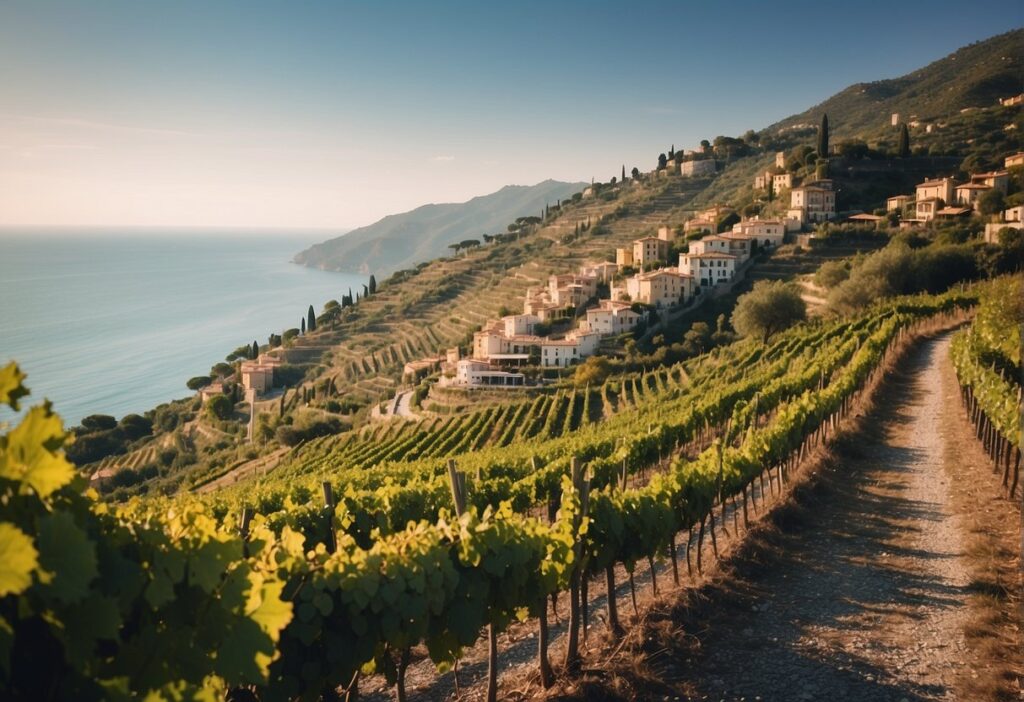
Liguria, nestled between the mountains and the sea, offers a tapestry of wine regions each with distinct charms. From the dramatic cliffs of Cinque Terre to the sun-kissed slopes of the Riviera Ligure di Ponente, you’ll discover the enchanting landscapes and wines that define this Italian coastline.
Cinque Terre and Golfo del Tigullio
Cinque Terre, a series of five picturesque villages in the province of La Spezia, is renowned for its steeply terraced cliffs where vineyards plunge down to the sea. The Cinque Terre DOC is celebrated for producing crisp, light white wines, mainly from the Bosco, Albarola, and Vermentino grapes. Adjacent to Cinque Terre, the Golfo del Tigullio area extends east to the charming town of Levante and offers a variety of coastal wines that capture the essence of the Ligurian breeze.
Riviera Ligure di Ponente
Stretching from Genoa to the French border, the Riviera Ligure di Ponente boasts extended hours of sunshine and mild temperatures, creating ideal conditions for viticulture. This region includes a cornucopia of local grape varieties. You’ll especially enjoy exploring wines from Savona down to the west, where Vermentino and Pigato lead as star white wine grapes, offering fresh and aromatic sips the region is acclaimed for.
Colli di Luni and Val Polcevera
The Colli di Luni subregion, located near the Tuscan border, offers wines that reveal a delightful collaboration between Liguria and Tuscany. You’ll taste Vermentino and Sangiovese here, reflecting a marriage of coastal freshness with Tuscan vigor.
Val Polcevera, closely associated with Genoa and its industrious spirit, contributes with lesser-known, yet equally compelling wines, producing an array of indigenous varietals like Bianchetta Genovese that truly reflect the variegated Ligurian terroir.
Grape Varieties and Wine Styles
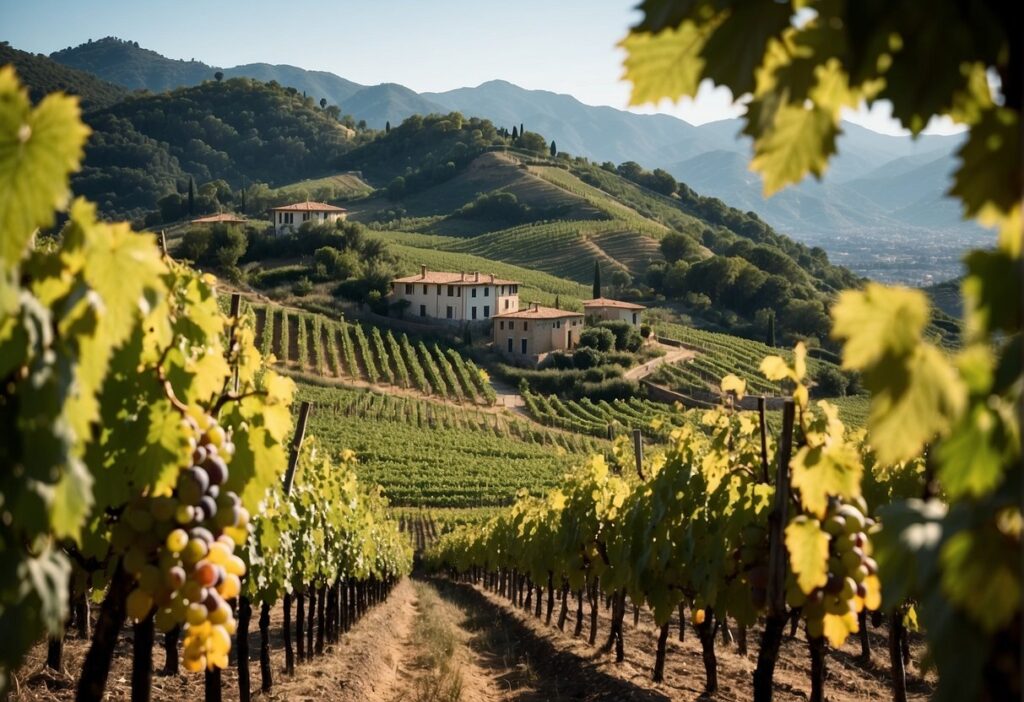
Liguria, renowned for its idyllic landscapes and coastal charm, is also home to a diverse range of grape varieties, leading to a spectrum of wine styles that embody the region’s uniqueness.
Whites: Vermentino, Pigato, and More
Liguria is celebrated for its white wines, which often exhibit crispness and are ideally paired with the local seafood. The Vermentino grape is a cornerstone of Ligurian whites, appreciated for its aromatic profile and ability to produce well-balanced wines. Its close relative, Pigato, has striking similarities but delivers slightly more complex and intense flavors.
- Vermentino: Aromatic, floral, and citrus notes
- Pigato: Richer, with distinct almond and herbal touches
Other important white grape varieties include Bosco and Albarola, notable for their roles in the prestigious Cinque Terre DOC. Bosco contributes body and structure to the wines, while Albarola adds zest and vitality. They are often blended to create light, refreshing wines perfect for a warm Ligurian day.
Reds: Rossese, Ormeasco, and Beyond
Liguria’s red wines, though less prominent than the whites, have a unique character. Centrally stands the Rossese grape, particularly the Rossese di Dolceacqua, offering lighter-bodied wines that burst with berry flavors and are characterized by an enticing floral aroma.
- Rossese: Light, berry-forward, and often floral
- Rossese di Dolceacqua: A designation for some of the higher-quality expressions of Rossese
Further enriching Liguria’s red wine scene, Ormeasco—the local name for Dolcetto—is known for producing soft and fruity wines. Varieties such as Granaccia, akin to Grenache, along with Sangiovese and Ciliegiolo, add depth to the region’s red wine portfolio. While not as widely planted, these varieties contribute to the blend of the Dolceacqua DOC, ensuring that you’ll have a rich experience as you explore Liguria’s reds.
Typical Characteristics of Ligurian Wines
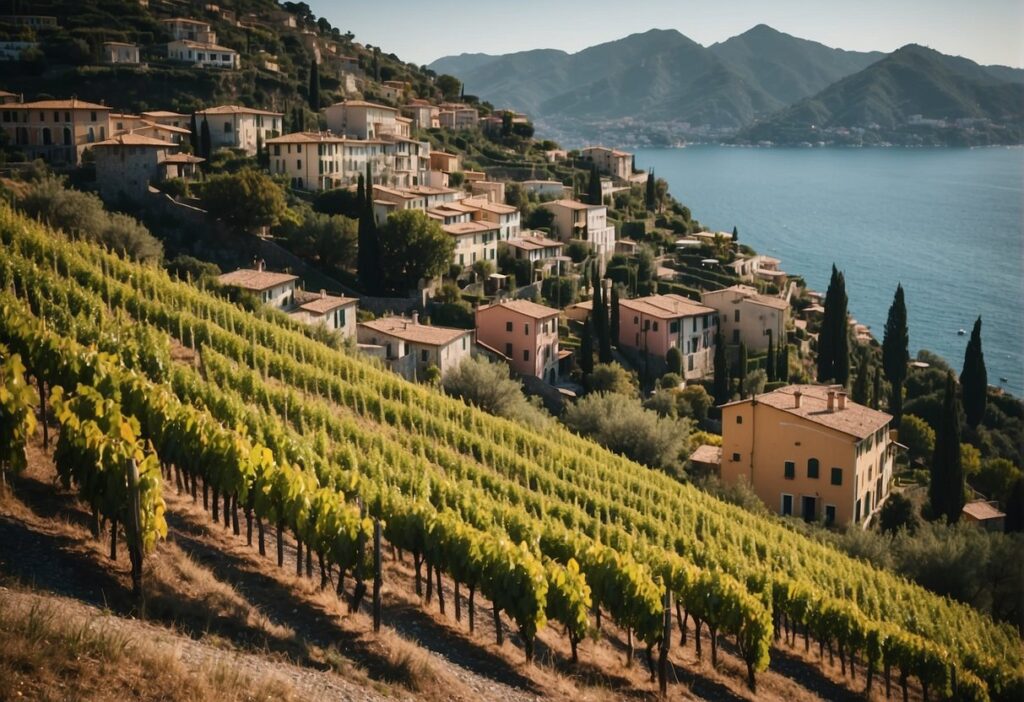
Ligurian wines offer a delightful range of flavors, reflecting the unique coastal terroir and the traditional viticulture of the region. You’ll discover a spectrum from refreshing citrus notes to intriguing spicy characteristics.
Tasting Notes: From Citrus to Spice
Citrus: Your palate may dance with the bright and crisp essence of Ligurian whites, often bursting with notes of lemon, lime, and grapefruit. These zesty qualities impart a refreshing finish, perfect for a seaside aperitif.
Spice: Venturing beyond citrus, some Ligurian wines carry a subtle spicy note, hinting at white pepper or nutmeg. This complexity adds a fascinating layer to each sip, marrying well with the area’s robust cuisine.
Floral and Fruit: Embrace the light floral aroma, reminiscent of Liguria’s wildflowers, alongside delicate hints of apricot and dried fruit. These bouquets harmonize beautifully in your glass.
Dark Berries: While primarily known for whites, Ligurian reds can surprise you with their blackberry nuances, offering a mild yet intriguing divergence from the usual coastal wine profiles.
Influence of Terroir on Minerality and Acidity
Minerality: The steep, rocky terrain imprints a distinct minerality in these wines, often described as a whiff of wet stone or a saline-like quality, which is especially prominent thanks to the proximity to the sea.
Acidity: Thanks to Liguria’s dynamic climate and soil composition, the wines maintain a vivacious acidity, making them incredibly food-friendly. Expect this acidity to bring a crispness that enhances the freshness of the wine.
Salinity: Savor the salinity, redolent of the Mediterranean breeze, that weaves through the wines of coastal vineyards. It serves not just as a flavor, but as a testament to the vines’ seaside heritage.
Viticulture and Winemaking Techniques
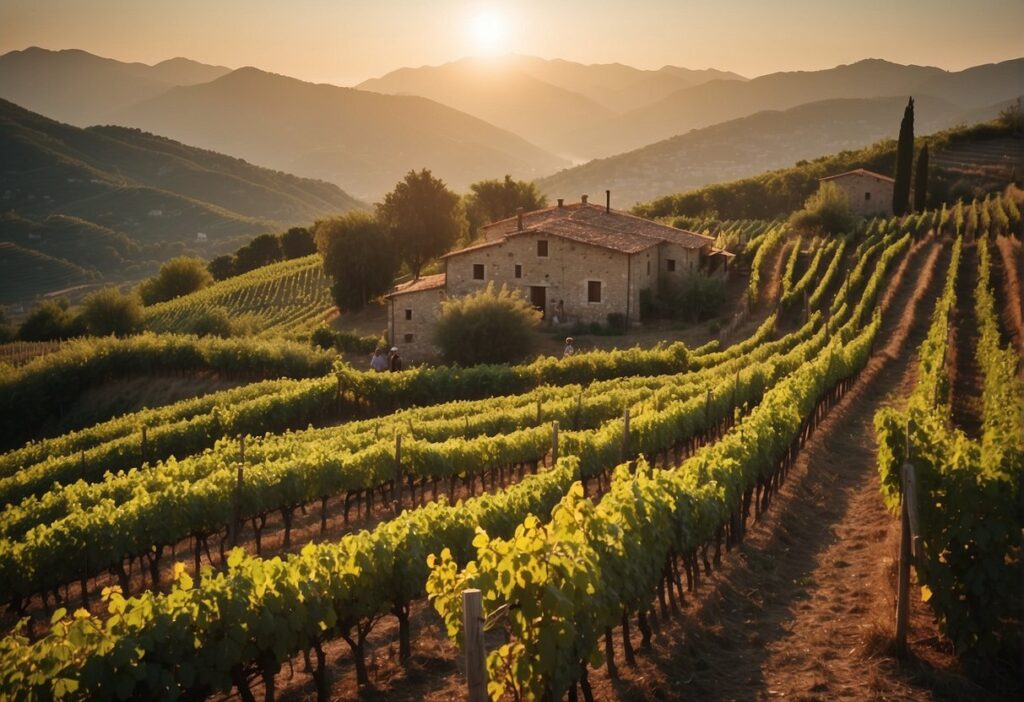
When you explore Liguria’s viticulture landscape, you find a unique combination of ancient traditions and modern practices. The region’s terroir, marked by its coastal cliffs and steep terrains, shapes the character of its wines. Even today, you can observe vineyards perched on narrow terraces, an approach dating back to the Etruscans and Greeks who populated this area centuries ago.
Vineyard management in Liguria often entails heroic viticulture—an apt term considering the challenges of cultivating grapes on such extreme slopes. It requires meticulous hand-farming, as mechanization is nearly impossible in these conditions.
Here’s what you can expect regarding production techniques:
- Hand harvesting: Essential for preserving the quality of the grape and for navigating the steep terrain.
- Terracing: Critical for preventing soil erosion and maximizing sun exposure.
- Selective pruning: Encourages healthy grape yields and ensures that only the best grapes make it into the wine production process.
Due to the region’s geography and climate, Liguria is conducive to growing a rich variety of grapes that result in wines with distinct personalities. Typical Ligurian grape varieties include the fragrant Pigato, the delicate Vermentino, and the cherished Rossese, each expressing a sense of place that can be savored in every bottle.
By embracing the region’s natural assets and historic methodologies, Ligurian winemakers have been successful in producing exceptional wines that not only reflect the character of the land but also thrive on the ingenuity and adaptation of those who tend to the vines. From planting to bottle, the winemaking techniques in Liguria are a testimony to the resilience and dedication required to make wine in such a demanding yet rewarding terrain.
Denominations and Quality Labels
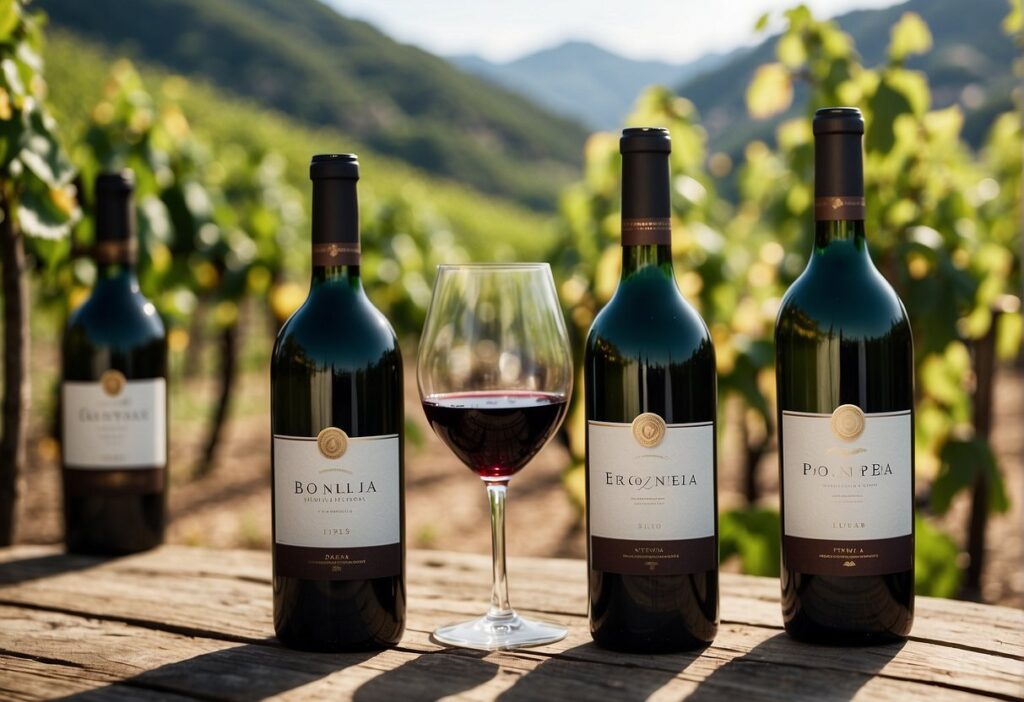
When you explore the Liguria wine region, you’ll come across several quality labels that signify the heritage and authenticity of the wines produced. The Denominazione di Origine Controllata (DOC) and the Denominazione di Origine Controllata e Garantita (DOCG) are two prominent Italian quality assurances that show strict adherence to defined wine-making regions and standards.
DOC designations in Liguria include:
- Cinque Terre DOC: Known for light white wines, with grapes such as Bosco, Albarola, and Vermentino.
- Golfo del Tigullio DOC: This denomination allows for the production of wines from the intriguing Rossese grape.
DOCG is even more stringent than DOC but Liguria currently has none.
In addition to DOC labels, you’ll find Indicazione Geografica Protetta (IGP), indicating that your wine is authentic to the region but may follow less strict production criteria compared to DOC/DOCG wines.
Liguria’s IGP wines to look for are:
- IGP Colline del Genovesato
- IGP Colline Savonesi
- IGP Liguria di Levante
IGP wines provide you with a broader expression of Ligurian terroir, often at more accessible price points.
The significance of these labels lies in their promise that you’re enjoying a wine that not only tastes delightful but also carries with it the story and commitment of its regional heritage. As you savor each sip, you’re experiencing a piece of Liguria’s rich winemaking tradition.
Food Pairings and Culinary Traditions
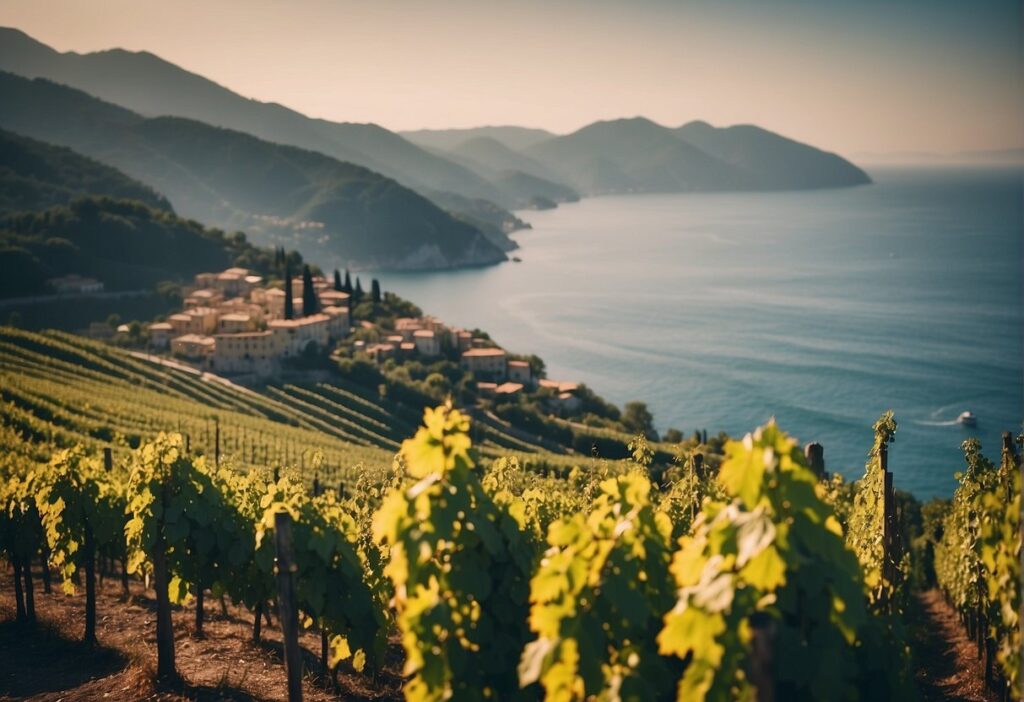
Liguria’s coastal location blesses you with an abundance of fresh seafood and a variety of wines that beautifully complement local dishes. Embrace the harmony between the region’s delicate white wines and the fresh taste of the sea, or let ripe reds elevate your experience of rich pasta creations.
Seafood and White Wines
Liguria’s white wines are as crisp and refreshing as a sea breeze, perfectly designed to enhance your seafood meals. With a glass of Vermentino, you’ll find an ideal match for Focaccia di Recco; its aromatic profile pairs well with light fish dishes, highlighting the herbs and citrus notes.
For a classic Ligurian treat, couple fresh Golfo del Tigullio DOC white wine with golden trenette or trofie lavishly coated with Pesto Genovese, a testament to the region’s mastery of basil and pine nuts, immersing you in a tapestry of local flavors.
- Seafood Pairing Highlights:
- Vermentino with Focaccia di Recco
- Golfo del Tigullio DOC white and Pesto Genovese pasta
Rich Pasta Dishes with Reds
Venture beyond the coastline to savor Liguria’s rich pasta dishes escorted by suave red wines. The body and tannins of a Golfo del Tigullio red graciously combat the robustness of a meat sauce (ragù), unlocking layers of flavor in both the wine and the dish. The traditional Ravioli alla Genovese, stuffed with succulent meats and drenched in savory sauces, finds its soulmate in a glass of the region’s red, each sip enhancing the richness of the pasta.
- Red Wine Pairing Suggestions:
- Golfo del Tigullio red with meat sauce pasta
- Red wine alongside Ravioli alla Genovese
Wine Tourism in Liguria
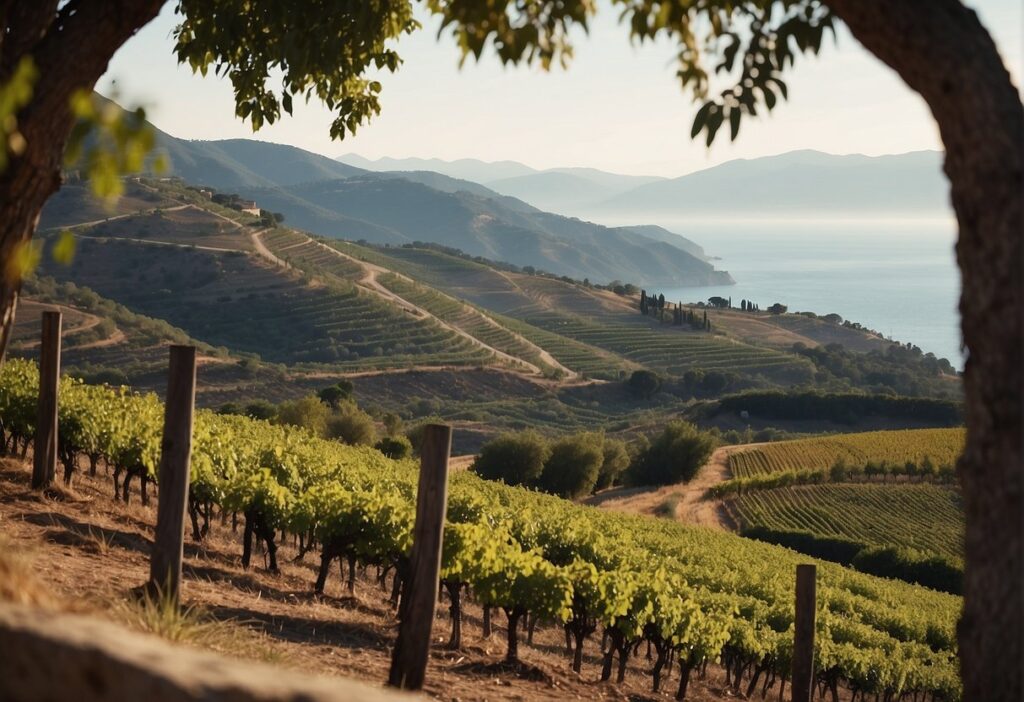
Liguria, a stunning coastal region in northwestern Italy, offers an enchanting blend of wine tasting opportunities, breathtaking landscapes, and rich cultural experiences. Whether you’re eager to explore the sophisticated cities, idyllic beaches, or rugged hiking trails, Liguria’s wine tourism scene welcomes you with open arms.
Agriturismo and Wineries to Visit
When you arrive in Liguria, you will have the delightful opportunity to visit various agriturismi and wineries that exemplify the region’s winemaking heritage. At the heart of Liguria’s viticulture are the celebrated Liguria wines, including the renowned Vermentino and Rossese.
- Tenuta Maffone: Discover true quality in Italian wine as you indulge in a wine tasting experience at Tenuta Maffone in Pornassio. This authentic estate offers a glimpse into the meticulous winemaking process.
- Agriturismo Torre Pernice: Encounter the largest Ligurian winery sprawled over luscious terrain. Here, you will find wines crafted with passion by winegrower Alessandro Poggi, whose dedication to the land and vine is palpable in each sip.
Both venues provide an idyllic setting for enjoying the fruits of the Ligurian terroir while taking in stunning panoramic views.
Cultural and Outdoor Activities
Liguria’s rich cultural landscape is harmoniously woven into its natural beauty. You can explore the visually arresting Cinque Terre, a constellation of five historic coastal villages, and enjoy a glass of wine while overlooking the Mediterranean Sea. The area is also perfect for those inspired by outdoor activities:
- Beaches: Liguria’s coastline is dotted with fine sandy beaches where you can relax after a day of wine explorations.
- Hiking Trails: If you crave adventure, the region offers secluded hiking trails that lead to romantic cliff-side villages.
Exploring Portofino gives you a taste of Liguria’s elegance, where the charm of this seaside town is amplified by its cultural allure and vibrancy. Whether you’re sipping wine by the sea or venturing across scenic trails, Liguria ensures a wine tourism experience that is as diverse as it is memorable.
Influential Winemakers and Estates
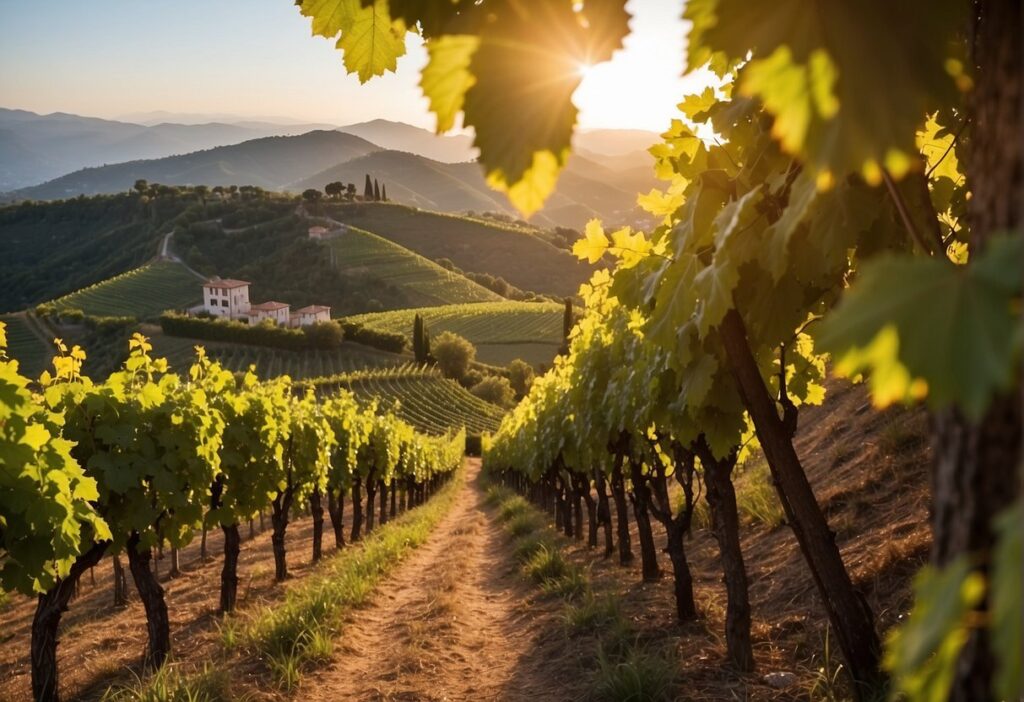
Liguria’s wine landscape teems with talented winemakers and picturesque estates. Durin stands out as one of the oldest wineries in the region. It’s known for producing exquisite sparkling wines that capture the essence of Liguria. You can discover wines with a distinct character that reflects the unique terroir of the area.
In the quaint town of Ventimiglia, winemaking is deeply rooted in tradition. Here, the practices passed down through generations contribute to the region’s exceptional wines. The Luni area, rich in history, is recognized for its superb Vermentino wines, highlighted by crisp and elegant notes.
For wine enthusiasts in search of something different, Liguria offers an interesting variety of rare and indigenous grapes. Bianchetta Genovese is a local gem, perfect for those eager to explore beyond the mainstream varieties. Similarly, Lumassina is a lesser-known grape that produces flavorful wines, embodying the Ligurian coast’s freshness.
If you’re intrigued by sweet wines, Sciacchetra, a celebrated dessert wine, is a must-try. With its rich and aromatic profile, it’s a testament to Liguria’s winemaking diversity.
Lastly, Tenuta Maffone introduces you to the harmony of innovation and tradition. This estate has carved out a reputation for itself with its dedication to quality and its embrace of sustainable practices.
| Estate | Specialty |
|---|---|
| Durin | Sparkling Wines |
| Ventimiglia | Tradition-Rich Wines |
| Luni | Vermentino |
| Bianchetta Genovese | Rare Varietal |
| Lumassina | Indigenous Grape Wines |
| Sciacchetra | Dessert Wine |
| Tenuta Maffone | Sustainable Practices |
Explore these estates and winemakers, and you’re sure to enhance your appreciation for the complexity and charm of Liguria’s wines.
Challenges and Future of Liguria’s Winemaking
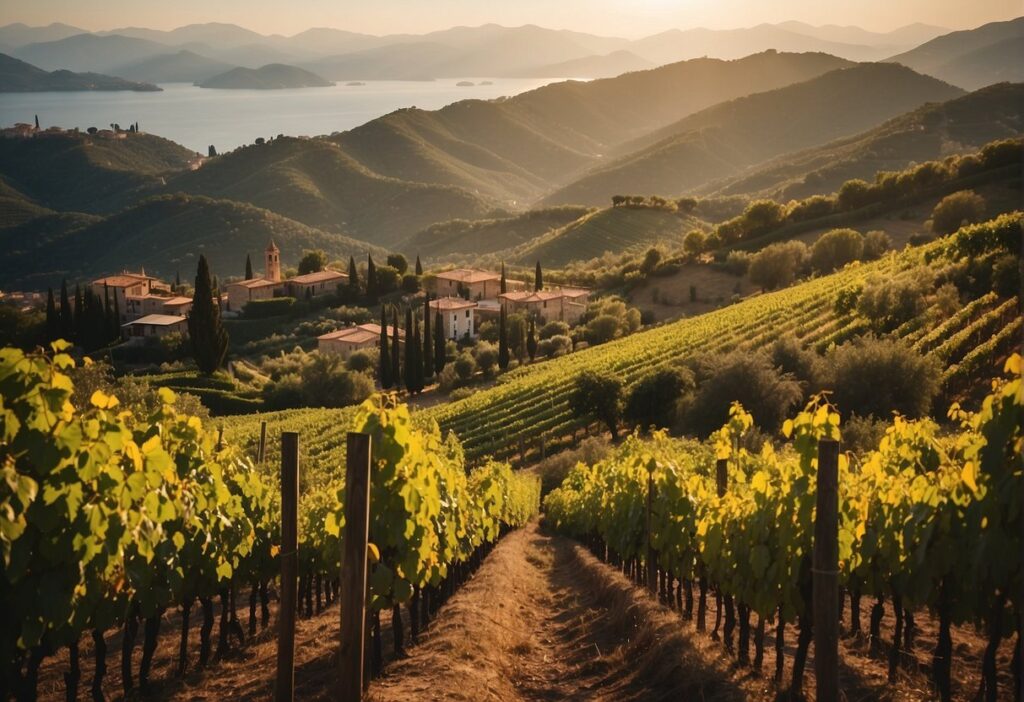
Liguria, known for its heroic viticulture due to the steep slopes and challenging terrains you must navigate, faces several obstacles. Your vines often cling to hillsides with scarce land area, making maintenance and harvesting a demanding task. Climate change poses an immediate threat with its erratic weather patterns, potentially affecting the delicate balance of the region’s Mediterranean climate.
You are embracing sustainability to safeguard your future, implementing methods that respect the environment and ecosystem. Dry stone walls built by your ancestors, which you still maintain, prevent soil erosion, serving both as a conservation technique and a historical tribute.
- Innovation arrives out of necessity, as you find new methods to cultivate and harvest grapes in difficult conditions. Liguria’s winemakers are increasingly adopting modern technologies to improve efficiency, without sacrificing the artisanal touch that sets your wines apart.
- Grape Varieties: Predominantly white wines make up about 75% of total wine production in the region.
Your future moves depend heavily on adapting to and mitigating the effects of climate change. You are likely to explore more heat-resistant grape varieties and invest in water-saving irrigation systems to address the drier conditions envisaged.
Economic Sustainability is also critical, and you are likely to continue navigating the balance between tradition and embracing global wine markets. Through maintaining authenticity and quality, you’re ensuring that the story of Liguria’s wine not only survives but thrives.
Conservation and Recognition
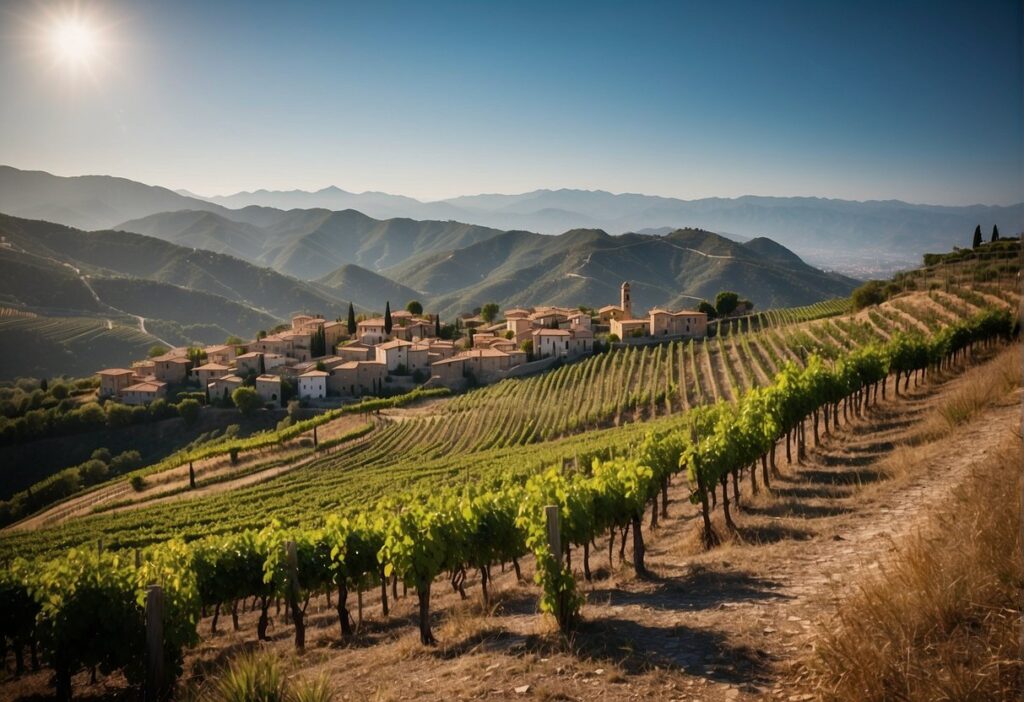
In the Liguria wine region, you’ll find a committed approach to preserving both the natural environment and treasured winemaking traditions. This dedication is exemplified by efforts to maintain the region’s viticulture as part of Liguria’s cultural heritage.
Cinque Terre, a jewel within Liguria, has achieved status as a UNESCO World Heritage Site. Recognized for its dramatic coastlines and terraced vineyards, your appreciation for this area grows with the understanding that these practices have been sustained for centuries, thanks to the local communities’ efforts.
- Preservation of Land: The steep slopes and difficult terrain require meticulous care, often compelling vintners to tend vines by hand. Remarkably, these methods haven’t waned and continue to be passed down through generations.
| Tradition | Description |
|---|---|
| Dry-stone Walls | Preserved to prevent soil erosion and maintain vine balance. |
| Ancient Grape Varieties | Cultivation of Bosco, Albarola, and Vermentino grapes. |
Liguria’s winemakers ardently protect their region’s unique varieties and methods, ensuring that you enjoy wines that are as authentic as they are flavorful. Your visit and support aid in the conservation of these time-honored traditions and the remarkable landscape where they thrive.
Frequently Asked Questions
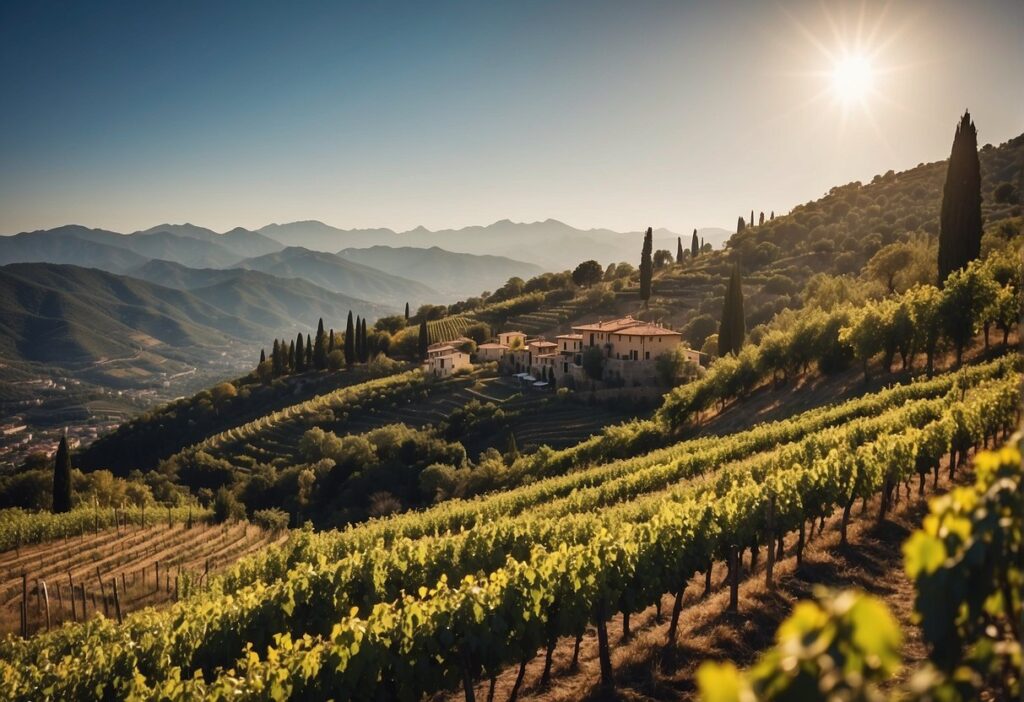
If you’re planning to explore the Liguria wine region, you’ll likely have questions about what to expect from this distinctive area. From the types of wine produced to the unique characteristics that define them, here’s what you should know.
What types of wine is the Liguria region known for producing?
The Liguria region, nestled between the Mediterranean Sea and rugged mountains, is renowned for its crisp and floral white wines, such as Vermentino. Reds are less common but still notable, especially the Rossese di Dolceacqua, which offers a delicate balance of fruit and earthy notes.
Can you recommend some top wineries to visit in Liguria?
Sure! You should consider visiting Agriturismo Torre Pernice, where local land is celebrated with passion, or Altavia, nestled in the Maritime Alps, blending traditional vineyard practices with modern aging techniques. Both wineries provide a taste of the region’s winemaking heritage and landscape.
What are the characteristics of Cinque Terre wine?
Cinque Terre wine, grown in steep vineyards along the coast, is distinct for its mineral-rich taste due to the unique terroir. The white wines from this DOC are noted for their dry, crisp profile and are often made from Bosco, Albarola, and Vermentino grapes.
What are some must-try Ligurian white wines?
For a true taste of Liguria, try the scented and savory Cinque Terre DOC whites, or experience the Colli di Luni DOC Vermentino, which is a refreshingly tart wine that pairs wonderfully with the region’s seafood dishes.
How does the terroir of Liguria influence its wines?
Liguria’s terroir, characterized by its coastal cliffs and terraced vineyards, contributes to the unique microclimate, which in turn imbues Ligurian wines with salinity and aromatic complexity. The challenging terrain results in intense labor but also wines with remarkable character.
What food pairings work well with Ligurian wines?
With Ligurian whites, you’ll find they beautifully complement seafood – think grilled fish or a rich seafood stew. For the reds like Rossese di Dolceacqua, pair them with dishes like rabbit or pasta with meat sauce to enhance your dining experience.
